This article was co-authored by Luba Lee, FNP-BC, MS. Luba Lee, FNP-BC is a Board-Certified Family Nurse Practitioner (FNP) and educator in Tennessee with over a decade of clinical experience. Luba has certifications in Pediatric Advanced Life Support (PALS), Emergency Medicine, Advanced Cardiac Life Support (ACLS), Team Building, and Critical Care Nursing. She received her Master of Science in Nursing (MSN) from the University of Tennessee in 2006.
There are 18 references cited in this article, which can be found at the bottom of the page.
This article has been viewed 134,358 times.
Hemorrhoids are abnormally enlarged veins at or near the anus. External hemorrhoids are visible from the outside. Internal hemorrhoids are inside the anal canal and are typically painless and not visible—you may not even know you have them unless they bleed or a doctor discovers them during an examination. Internal hemorrhoids are often caused by constipation and made worse by other factors, such as straining during a bowel movement or prolonged natural childbirth. For severe or persistent hemorrhoids, the best thing to do is to see your doctor for treatment; however, you will also have to make some diet and lifestyle changes as part of your treatment. If you experience pain from your internal hemorrhoids, you can take pain-relief measures as you treat them.
Steps
Home Treatment Methods
-
1Drink plenty of water. Water is essential to prevent constipation, which is a major cause of hemorrhoids. Make sure that you are drinking an 8 fl oz (0.24 L) glass of water about 8 times a day. If you are active or if you still feel thirsty, then drink some more.[1]
- You can also drink other types of beverages to get more fluids, such as juice, herbal tea, and sparkling water. Just try to avoid caffeinated beverages and alcohol. Beverages that contain caffeine or alcohol may dehydrate you and cause constipation.
-
2Get more fiber. Getting enough fiber can help to make bowel movements easier and help to treat and prevent hemorrhoids. Aim for about 25 grams of fiber per day. Include more fruits, vegetables, and whole grains in your diet to increase your daily fiber intake.[2]
- Beetroot is an excellent source of fiber, and is also good for your overall digestive health. Its anti-inflammatory properties may help reduce inflammation and discomfort from hemorrhoids.[3]
- If you do not meet your daily goal for fiber intake, then you may want to include a fiber supplement to help you reach your goal.[4]
Advertisement -
3Exercise every day. Exercise can help to stimulate your digestive system, which can prevent constipation and hemorrhoids.[5] Try taking a daily walk or riding your bike to get around town. Even little things such as parking further away from the entrance at the mall or taking the stairs instead of the elevator can help you to get more exercise throughout the day.
-
4Go to the bathroom right away. One way to prevent hemorrhoids from becoming worse is to use the bathroom as soon as you have the urge to defecate. Holding onto waste can lead to constipation, and straining due to constipation is a major cause of hemorrhoids. Pay attention to your body’s signals and go to the bathroom right away if you have the urge to make a bowel movement.[6]
-
5Try not to strain on the toilet. Straining can also make hemorrhoids worse, so make sure that you do not try to force a bowel movement. If you cannot have a bowel movement and find that you are starting to strain, then get up from the toilet and try again later.[7]
- Do not stay on the toilet and keep trying to go. Long periods of sitting on the toilet can also make hemorrhoids worse.[8]
- Instead of sitting, try squatting. This may make it easier to pass a bowel movement without straining.[9] You can purchase a stool or other device that makes it possible to hold a squatting position over the toilet.
-
6Use soothing wet wipes instead of toilet paper. If any part of your hemorrhoids is external, wiping with regular toilet tissue can be irritating. Look for medicated hemorrhoid wet wipes instead, since these are gentler and contain soothing ingredients, such as aloe and witch hazel.[10]
- Some options include Preparation H Medicated Wipes, Cottonelle flushable wipes, and Tucks pads.
- In a pinch, you can also use a damp paper towel or piece of toilet paper. Cool water will soften the paper and soothe inflammation.
- Avoid using baby wipes, since they can clog your toilet. Even wipes that are advertised as flushable can often cause clogs, so use caution when flushing them or just throw them in the garbage.
Pain Relief
-
1Talk to your doctor if you have pain with an internal hemorrhoid. It is rare that internal hemorrhoids cause pain, because there are very few pain receptors in the lower rectum.[11] Pain usually only occurs if the hemorrhoid has prolapsed, meaning it comes out of your anus. This may resolve on its own, or you may be able to push it in yourself; however, severe prolapses, which are often very painful, need to be treated by a doctor.[12]
- You may also experience severe itching and irritation.
- If you develop a blood clot in this area, this will increase the pressure on the hemorrhoid and likely lead to constant and possibly severe pain.
-
2Soak in a warm Sitz bath. A warm Sitz bath can also help to soothe hemorrhoids. Try taking a Sitz bath after you have a bowel movement to help soothe and cleanse your hemorrhoids.[13]
- To prepare a Sitz bath, fill a tub with 3–4 inches (7.6–10.2 cm) of warm water and add about a cup (400g) of Epsom salts. Then, sit in the tub for about 15 to 20 minutes.
-
3Take over-the counter pain relievers. Over-the-counter pain relievers may also provide some relief for painful hemorrhoids. Try taking acetaminophen (Tylenol), ibuprofen (Motrin, Advil), or aspirin for hemorrhoid pain. Read and follow the manufacturer’s instructions before use.[14]
- Ask your doctor for a recommendation if you are not sure what type of over-the-counter pain reliever you should take.
-
4Apply a cooling witch hazel compress. Witch hazel is soothing, and may reduce inflammation and pain from your hemorrhoids.[15] Apply a cooling pad that contains witch hazel, such as a Tucks Md Cool Hemorrhoid Pad, to relieve pain and itching.
- For an extra cooling effect, refrigerate the pads before using them. You can also make a plain cold compress by soaking a cloth in cold water or wrapping an ice pack in cloth and holding it against your anal area.[16]
- Don’t use a product containing witch hazel for more than a week, since prolonged use can cause irritation.
-
5Insert a suppository for localized relief. If you are experiencing pain, a suppository might help. Suppository treatments for hemorrhoids may reduce the size of internal hemorrhoids by delivering medicine to the base of your hemorrhoids within your rectum. Reducing the size of your hemorrhoids can also reduce pain and discomfort. You can buy over-the-counter suppositories that contain witch hazel and other ingredients meant to treat hemorrhoids.[17]
- Keep in mind that suppositories need to be inserted into your anus.[18]
-
6Sit on a cushion. Sitting on a hard surface for a long period of time can cause hemorrhoid pain to feel more intense. Instead, try using a cushion or a doughnut pillow. Using a cushion or doughnut pillow can make hemorrhoids feel less painful.[19]
-
7Try a magnesium supplement to make bowel movements easier. Magnesium relaxes the bowels and softens your stools, making it easier to go to the bathroom. Your doctor can give you specific dosing advice, but you may find that a dose of 200-500mg in the morning and evening eases constipation and reduces your hemorrhoid pain.[20]
- Don’t take magnesium supplements if you have kidney disease or are taking any other type of medication that contains magnesium. Let your doctor know first if you’re taking other supplements or medicines so they can help you determine if it’s safe.
- Avoid magnesium supplements that also contain calcium, since they can make constipation worse.
-
8Ask your doctor about using a triphala supplement. Triphala is an herb frequently used in traditional or alternative medicine to treat constipation and other digestive issues. It may help prevent constipation and soften your stools, which can make bowel movements easier and gentler on your hemorrhoids. It may also reduce painful inflammation. Talk to your doctor before trying triphala or any other supplement, especially if you have any serious medical conditions or are taking other medications.[21]
- Side effects with triphala are rare, but in some cases it can cause gastrointestinal side effects, such as an upset stomach.[22]
Medical Treatment
-
1See your doctor for treatment. One of the main symptoms of hemorrhoids is bleeding from the rectum, but this is also a symptom of colorectal cancer. For this reason, you should visit your doctor as soon as possible if you are experiencing internal hemorrhoid symptoms. Your doctor will perform a physical exam and may also order some imaging tests to rule out cancer. Some of the tests that your doctor may order include:[23]
- Colonoscopy — For this procedure, a long, flexible tube with a camera and light on the end is inserted into the anus and moved into the rectum and intestine to capture images.
- Sigmoidoscopy — This procedure uses a camera and light at the end of a short tube. In a sigmoidoscopy, the camera captures images of the lower rectum and the sigmoid colon (the lowest part of the colon).
- Barium enema x-ray — This procedure requires an enema with barium to coat the inside of the colon, followed by x-rays to capture images of the colon.[24]
-
2Ask about rubber band ligation. If internal hemorrhoids move outside of the rectum, then you may be eligible for rubber band ligation. In this procedure, your doctor will place 1 or 2 small rubber bands around the base of the hemorrhoid, which will eventually cause it to drop off.[25]
- The rubber band cuts off circulation to the hemorrhoid, which may cause some discomfort. There might also be some bleeding. But after a couple of days, the hemorrhoid will fall off.
-
3Discuss the possibility of having sclerotherapy. For this procedure, your doctor will inject a solution into your hemorrhoid that will cause it to shrink. This treatment is effective, but not as effective as rubber band therapy. You might have some pain with the initial injection, but otherwise this procedure is pain-free.[26]
-
4Look into coagulation. Coagulation uses infrared light, heat, or a laser to treat hemorrhoids. After exposure, the hemorrhoids will harden and shrink. This procedure can treat hemorrhoids, but they are more likely to come back than when treated with rubber band ligation.[27]
-
5Consider hemorrhoid removal surgery. For large hemorrhoids or for hemorrhoids that have not responded to other treatments, surgery may be the best option. There are 2 main types of hemorrhoid surgery that are used to treat hemorrhoids:
- Hemorrhoidectomy — In this procedure, the surgeon removes the hemorrhoid by making an incision around its base.[28] Keep in mind that you will be anesthetized during the procedure so that you will not feel anything; however, recovery can be painful and you may need prescription pain medicine to deal with pain after the surgery.[29]
- Stapled hemorrhoidectomy — In this procedure, the surgeon uses staples to block blood flow to hemorrhoids. This procedure is less painful and includes a faster recovery time than a standard hemorrhoidectomy, but it also carries the a higher risk of hemorrhoid recurrence and rectal prolapse (where part of the rectum falls out of the anus).[30]
References
- ↑ https://www.niddk.nih.gov/health-information/digestive-diseases/hemorrhoids/treatment
- ↑ https://www.niddk.nih.gov/health-information/digestive-diseases/hemorrhoids/treatment
- ↑ https://clinmedjournals.org/articles/jnmdc/journal-of-nutritional-medicine-and-diet-care-jnmdc-6-043.php?jid=jnmdc
- ↑ http://www.health.harvard.edu/diseases-and-conditions/hemorrhoids_and_what_to_do_about_them
- ↑ https://health.clevelandclinic.org/5-simple-ways-you-can-prevent-hemorrhoids/
- ↑ https://health.clevelandclinic.org/5-simple-ways-you-can-prevent-hemorrhoids/
- ↑ https://www.health.harvard.edu/diseases-and-conditions/self-help-steps-to-get-through-hemorrhoid-flare-ups
- ↑ https://www.niddk.nih.gov/health-information/digestive-diseases/hemorrhoids/treatment
- ↑ https://www.ncbi.nlm.nih.gov/pubmed/26676214
- ↑ https://www.templehealth.org/about/blog/how-can-i-treat-my-hemorrhoids
- ↑ http://www.health.harvard.edu/diseases-and-conditions/hemorrhoids_and_what_to_do_about_them
- ↑ https://www.fascrs.org/patients/disease-condition/hemorrhoids-expanded-version
- ↑ https://www.niddk.nih.gov/health-information/digestive-diseases/hemorrhoids/treatment
- ↑ https://www.niddk.nih.gov/health-information/digestive-diseases/hemorrhoids/treatment
- ↑ https://health.clevelandclinic.org/7-best-and-worst-home-remedies-for-your-hemorrhoids/
- ↑ https://newsnetwork.mayoclinic.org/discussion/home-remedies-relief-from-hemorrhoids/
- ↑ https://www.mayoclinic.org/diseases-conditions/hemorrhoids/diagnosis-treatment/drc-20360280
- ↑ http://www.nhs.uk/Conditions/Haemorrhoids/Pages/What-happens-page.aspx
- ↑ http://www.health.harvard.edu/diseases-and-conditions/hemorrhoids_and_what_to_do_about_them
- ↑ https://hemorrhoidcentersamerica.com/wp-content/uploads/magnesium.pdf
- ↑ https://www.ncbi.nlm.nih.gov/pmc/articles/PMC5567597/
- ↑ https://www.mskcc.org/cancer-care/integrative-medicine/herbs/triphala
- ↑ https://www.mayoclinic.org/diseases-conditions/hemorrhoids/diagnosis-treatment/drc-20360280
- ↑ https://www.hopkinsmedicine.org/health/treatment-tests-and-therapies/barium-enema
- ↑ http://www.mayoclinic.org/diseases-conditions/hemorrhoids/basics/treatment/con-20029852
- ↑ http://www.mayoclinic.org/diseases-conditions/hemorrhoids/basics/treatment/con-20029852
- ↑ http://www.mayoclinic.org/diseases-conditions/hemorrhoids/basics/treatment/con-20029852
- ↑ http://www.aafp.org/afp/2002/0415/p1629.html
- ↑ http://www.mayoclinic.org/diseases-conditions/hemorrhoids/basics/treatment/con-20029852
- ↑ http://www.mayoclinic.org/diseases-conditions/hemorrhoids/basics/treatment/con-20029852
About This Article
To treat internal hemorrhoids at home, start by drinking 8, 8-ounce glasses of water a day to prevent constipation. Next, keep your bowel movements regular by getting enough fiber with foods like fruit or whole grains, or taking a 25 mg fiber supplement. Additionally, stimulate your digestive system with light exercise like a walk or bike ride every day. To keep your hemorrhoids from getting worse, go to the bathroom as soon as you feel the need to defecate, and try not to strain. For more tips from our Medical reviewer, including pain relief methods like a Sitz bath, read on!

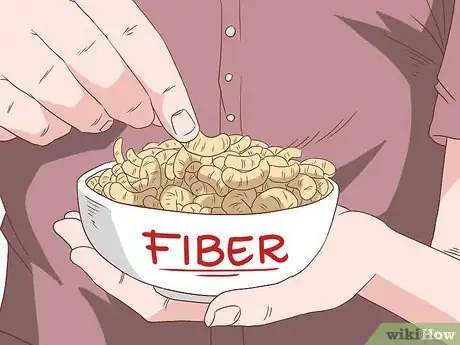

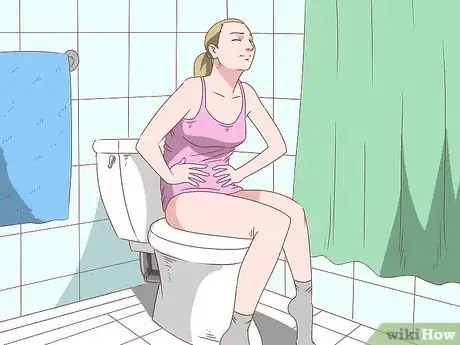
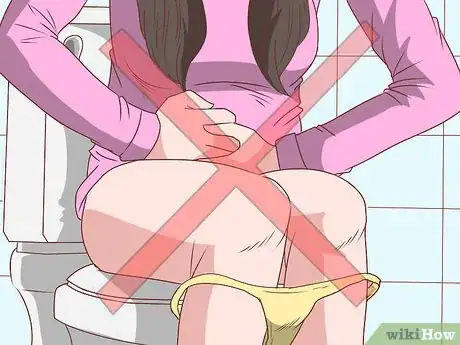
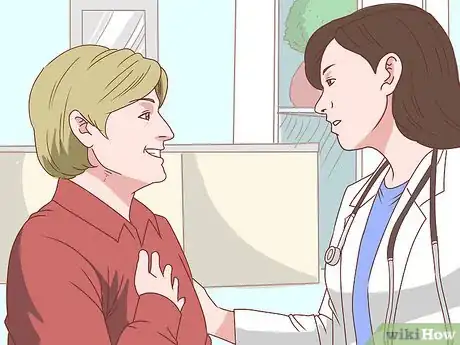
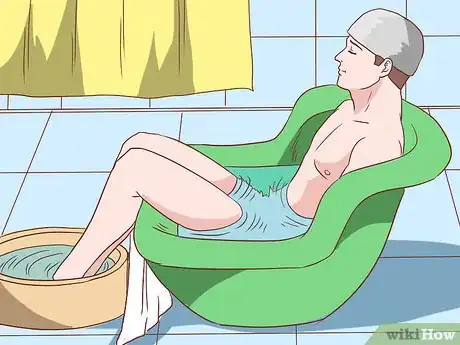
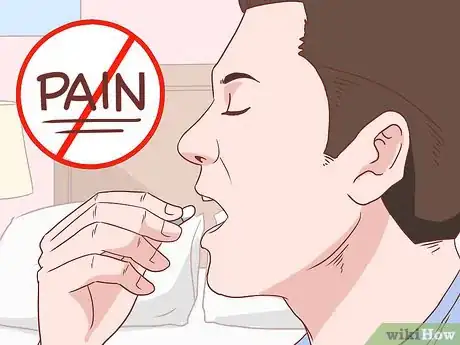
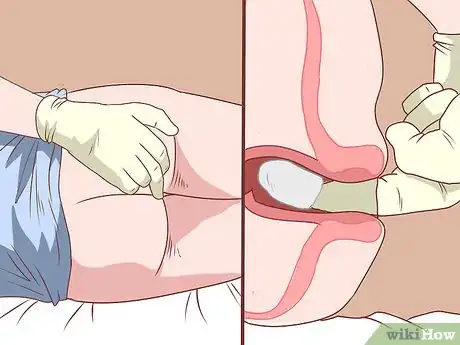
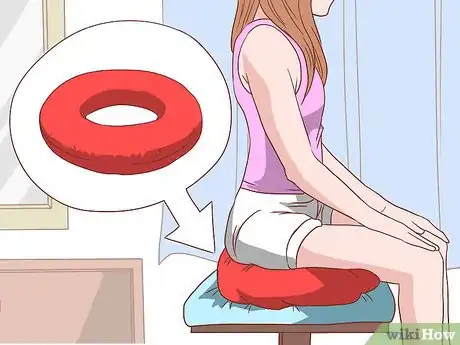
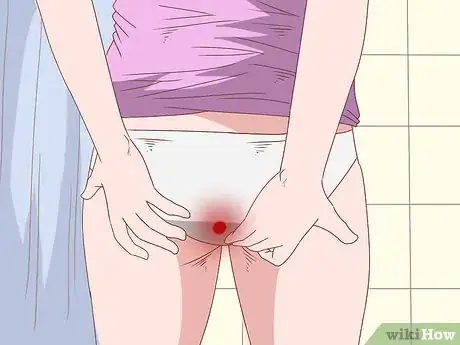
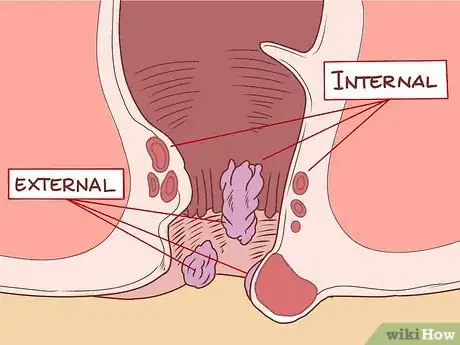
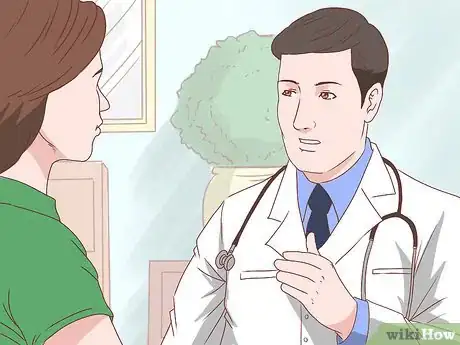

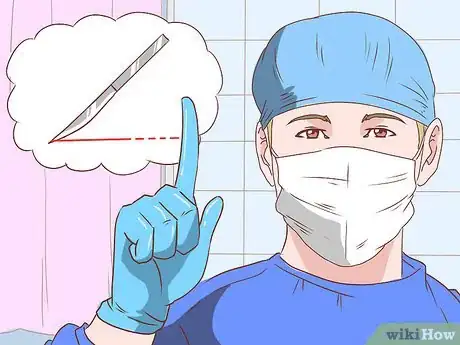
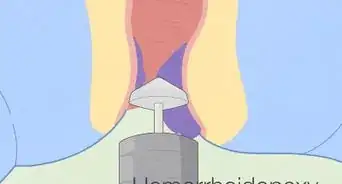
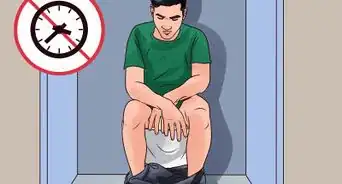
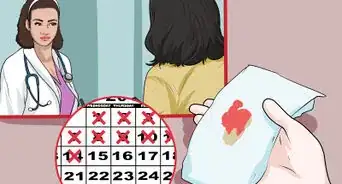
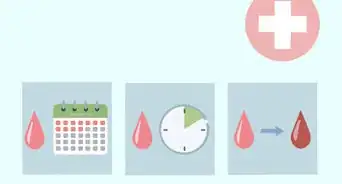
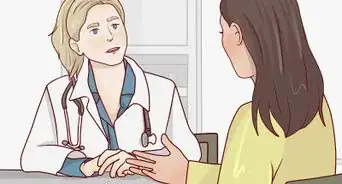

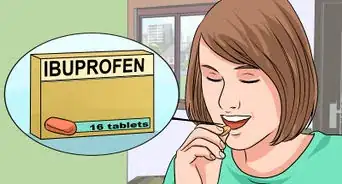
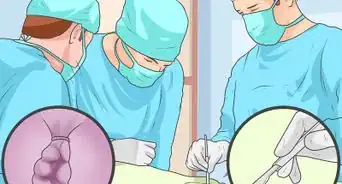
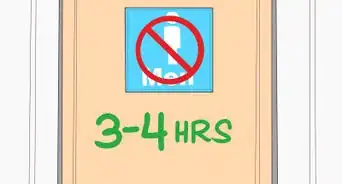
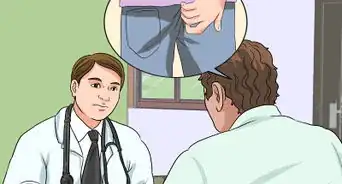
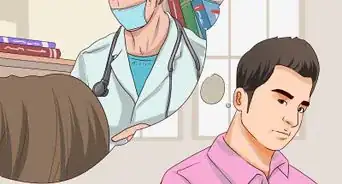
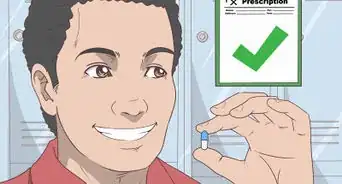
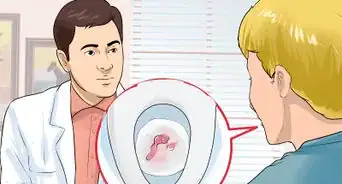
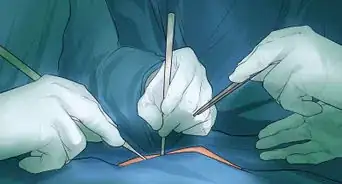








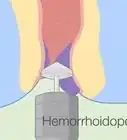
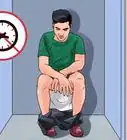

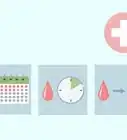



































Medical Disclaimer
The content of this article is not intended to be a substitute for professional medical advice, examination, diagnosis, or treatment. You should always contact your doctor or other qualified healthcare professional before starting, changing, or stopping any kind of health treatment.
Read More...